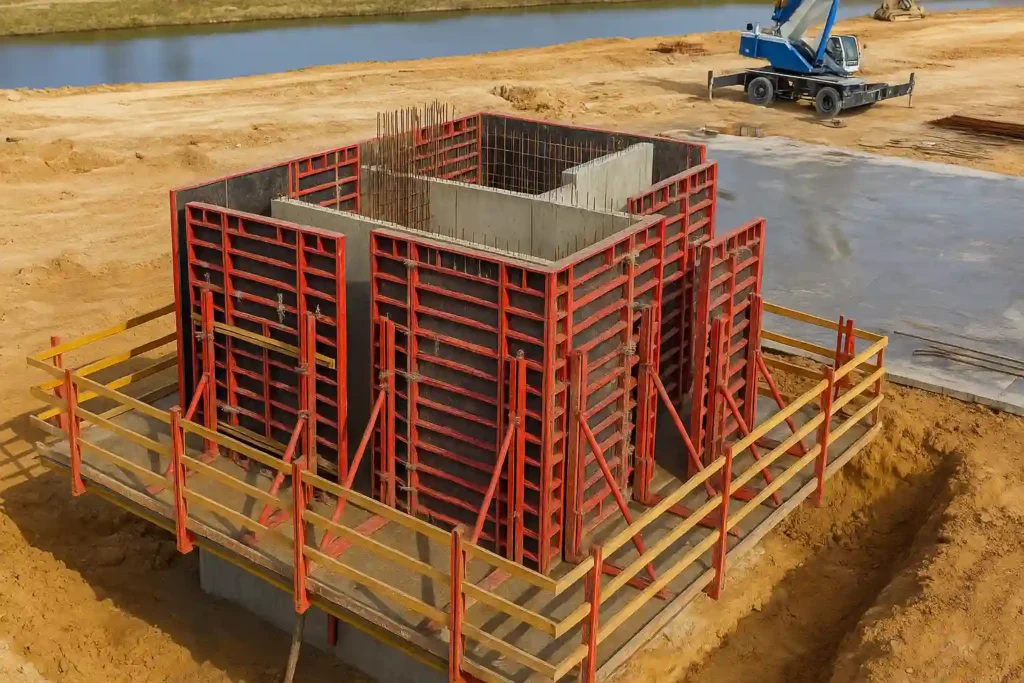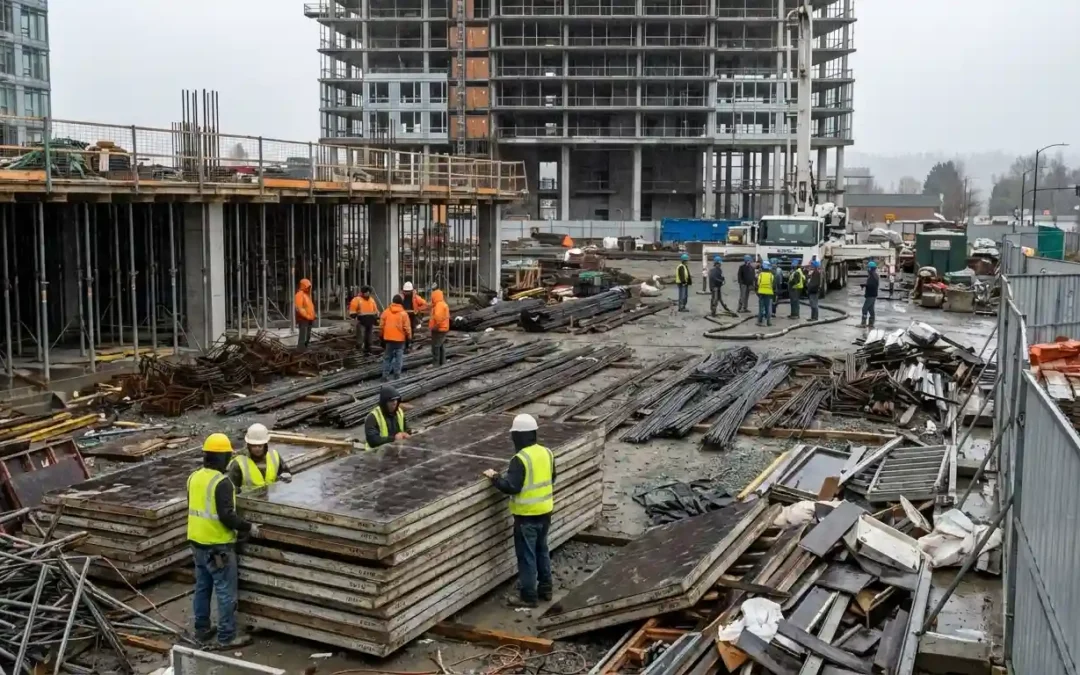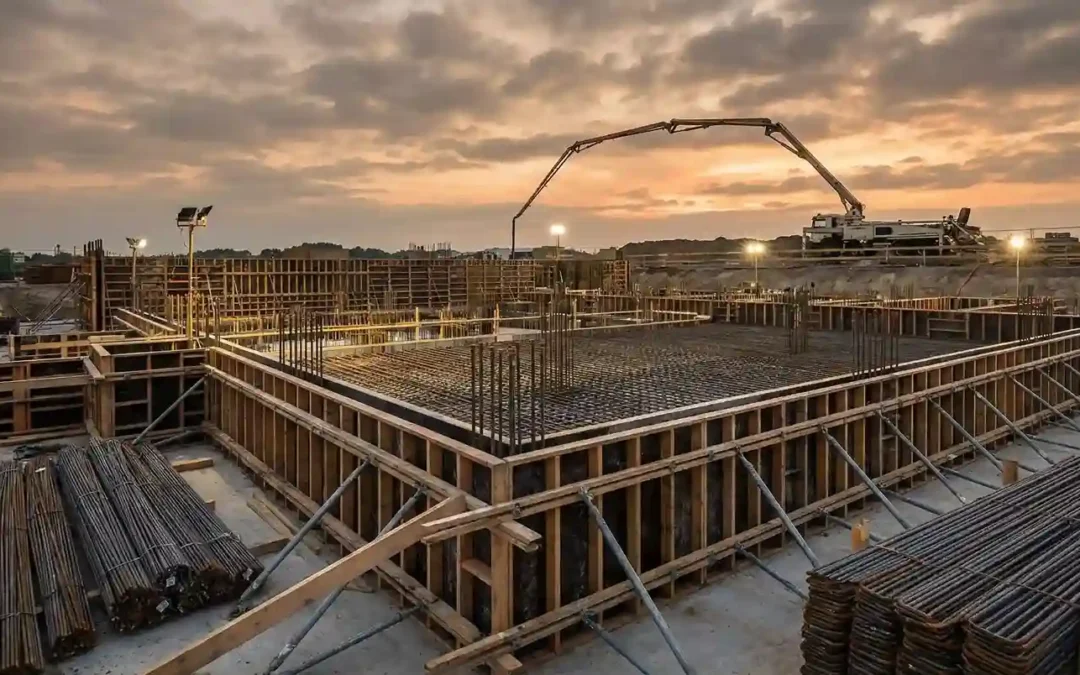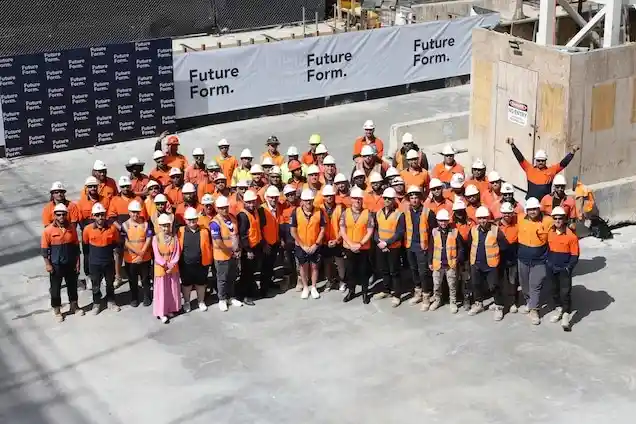
In today’s dynamic property-development landscape, time is money and precision is paramount. Projects demands are rising—complex designs, tighter deadlines, high safety standards, and increasing pressure to deliver value without sacrificing quality. Amidst this backdrop, partnering with a structural package specialist is no longer a luxury—it’s a strategic advantage. If you’re a developer, construction professional, industry partner, supplier or client craving seamless execution on your visionary property venture, let’s explore how working with a specialist like Future Form can transform your approach to structural delivery.
Defining a structural package specialist
So, what exactly is a structural package specialist? In essence, it’s a dedicated expert in the FRP process—form, reo, pour—who assumes responsibility for shaping the foundations of your structure. That goes beyond standard formwork to orchestrate the entire sequence:
- Form – Designing and delivering precise formwork systems tailored to structural geometry and load requirements
- Reo – Coordinating reinforcement placement to ensure strength, stability and compliance with engineering specifications
- Pour – Managing the concrete pour with efficiency and accuracy, from delivery to compaction and finishing
Instead of juggling separate contractors for formwork, reinforcement, and pouring, a structural package specialist like Future Form provides an integrated, seamless service that elevates outcomes—and your peace of mind.
Why efficiency matters more than ever
Timeline optimisation
In a fast-paced project environment, delays can cascade into significant cost overruns. A structural package specialist streamlines coordination between steps—formwork doesn’t wait for reo issues, pours happen at peak readiness, and handovers are smoother. The result? Leaner schedules, fewer downtimes, and more fluid progress.
Quality consistency
Multiple subcontractors often translate into variable workmanship, gaps in communication, and inconsistent standards. With one specialist overseeing FRP, quality control is centralised. Future Form’s protocols ensure every form is dimensionally accurate, reinforcement is installed precisely, and pours are executed to spec—creating a reliable, unified build quality.
Cost-effectiveness
The old model of siloed contracts invites inefficiencies: duplicated mobilisations, overlapping supervision, potential reworks, and clashes between trades. A single specialist reduces these hidden costs. Streamlining logistics—fewer site visits, better resource planning and bulk purchasing—translates into substantial savings on both time and capital.
Risk Mitigation
Complex projects bring risk—errors in formwork, reinforcement misplacement, or disrupted pours can lead to structural failures or safety incidents. Having one accountable expert reduces fragmentation. Future Form’s integrated approach ensures clarity of responsibility, faster identification of issues, and a stronger safety culture throughout the FRP process.
Tips for best utilising FRP specialists
When selecting or working with a structural package specialist, consider these pointers:
- Early involvement – Engage them at design or tender stage to ensure formwork is efficient and integrated.
- Clarity in specifications – Clearly define FRP deliverables—are you expecting formwork only, or a full package?
- Site access & logistics – Plan early for how formwork units will be delivered and stored onsite.
- Quality assurance protocols – Agree on testing, inspection and documentation practices upfront.
- Flexibility for changes – Ensure your partner has digital workflows or modular systems to adapt quickly to design shifts.
How Future Form unlocks FRP efficiency
Let’s consider how Future Form delivers on this promise:
Tailored formwork solutions
Future Form develops formwork that’s designed for your project’s specific needs—geometry, load, access constraints, and build schedule. Whether the design demands complex curves, high loads, repetitive modules or architectural flair, their formwork systems are engineered to conform, reuse, and deliver consistently.
Seamless reinforcement integration
Handling reinforcement is often tricky—requiring accuracy, coordination with structural engineering, and safe, efficient placement. Future Form integrates reo work directly into the structural package. Early collaboration between designers, engineers and onsite teams removes bottlenecks, ensures correct detailing, and allows reinforcement to be placed right at peak readiness.
Optimised concrete pouring
Concrete pours are high-pressure events: timing needs to align with form and reo readiness, logistics must support delivery and placing, and vibration must ensure compaction. The specialist keeps everything aligned—ensuring forms and reo are ready, managing pour sequencing, deployment of crews and plant, and verifying finish quality post-pour.
Advanced planning & digital workflows
Efficiency starts well before the first timber is cut. Future Form employs digital tools for planning FRP activities—3D modelling, estimate software, clash detection with trades, and sequencing calendars. These digital workflows support better communication, reduce surprises, and enhance transparency across teams.
Sustainability & resource optimisation
A modern construction ethos demands resource efficiency and environmental responsibility. Future Form’s approach to FRP embraces reusable formwork systems, waste-reduction strategies, and optimisation of material use—delivering structural excellence with lighter ecological footprint.
Tailored expertise for diverse projects
Whether your project is a residential complex, commercial office tower, bridge abutment, educational facility or industrial hub—differences in scope, load, complexity or finish requirements demand an FRP approach that adapts.
Future Form tailors the structural package to:
- Scale – from small-batch pours in podiums to repetitive high-rise floors
- Geometry – accommodating curves, setbacks, overhangs, bespoke shaping
- Materials – coordinating multi-material interfaces such as mass concrete, precast tie-ins, or architectural facades
- Logistics – adjusting mobilisation for constrained sites, multiple zones, or restricted access realms
This adaptability emphasises their flexibility and illustrates why a specialist approach outperforms generic FRP handling.
Enhancing collaboration & communication
A key benefit of working with a structural package specialist—beyond craftsmanship—is the clarity it brings to collaborative workflows. Future Form doesn’t operate in isolation. Rather, they embed themselves in your project ecosystem:
- Regular coordination with architects, engineers, main contractors, and site teams
- Clear milestones—form-complete, reo-complete, pour-complete—built into project timelines
- Transparent reporting—visual updates, inspection records and punch-list monitoring
- Rapid response to design changes—formwork is adapted, models updated, schedules tweaked
This deep integration enhances stakeholder trust, smoothes decision-making, and lets your vision evolve without dragging the FRP timeline behind.
Real-world advantage: from vision to delivery
Imagine a developer dreaming of a mixed-use building—sleek vertical lines, complex cantilevers, long retail spans and seamless vertical circulation. While each element is exciting, the commissioning team needs efficiencies to meet budgets and timelines.
Partnering with Future Form as a structural package specialist means:
- Structural details get locked in early, with engineered formwork solutions designed for the architect’s vision
- Reinforcement integrates smoothly into module formwork, ready for pour at the right moment
- Pours are scheduled tightly within calendars, saving weeks of potential delay
- Reusable formwork panels deliver cost savings across floors, and waste is controlled on-site
The outcome? Your architectural ambition becomes reality—with fewer snags, tighter handovers, and a build that feels as seamless as the design intent.
The bottom line: efficiency that realises vision
In summary, what does it truly mean to work with a structural package specialist? It’s about unlocking efficiencies that matter—delivering your visionary projects with:
| Benefit | Outcome for You |
| Tme-efficient build | Fewer delays; more predictable handovers |
| Quality and precison | Structural integrity and aesthetic excellence |
| Cost control | Reduced waste, overlap, and unnecessary risk |
| Collaboration | Seamless communication among all stakeholders |
| Adaptability | Solutions that flex with project complexity |
For developers, professionals, partners, suppliers and clients looking to elevate their property projects, a partner like Future Form brings the FRP process into sharper focus—balancing structure with strategy.
Bring structure to vision
Unlocking efficiency is at the heart of realising any visionary property project. Now more than ever, developers and stakeholders need solutions that streamline time, deliver consistency and control costs. That’s exactly what a structural package specialist brings.
By partnering with Future Form, your FRP process becomes more than a sequence of tasks—it becomes a coordinated strategy. You unlock smoother navigation from concept to concrete, bridging the gap between design intent and structural reality.
From tailored formwork to integrated reinforcement, from sequenced pours to strategic planning—all driven by digital intelligence and adaptable systems—Future Form helps you deliver certainty, clarity, and excellence.
So, whether you’re embarking on your next iconic structure, a bold redevelopment, or a specialised build—let Future Form’s structural package specialism unlock the efficiency that powers your vision.
References
American Concrete Institute. (2020). Guide to Formwork for Concrete (ACI 347R-16). Retrieved from https://www.concrete.org/publications/internationalconcreteabstractsportal.aspx?m=details&i=51717512
Chartered Institute of Building. (2015). Structural Concrete Specification for Building Construction. Retrieved from https://www.ciob.org/knowledge/structural-concrete-specification-building-construction
Farnsworth, B. (2015). Concrete mixture designs for strength and durability. Journal of Construction Materials, 12(2), 78–93. Retrieved from https://www.researchgate.net/publication/281007662_Concrete_Mixture_Designs_for_Strength_and_Durability
Kosmatka, S. H., Kerkhoff, B., & Panarese, W. C. (2011). Design and Control of Concrete Mixtures (15th ed.). Portland Cement Association. Retrieved from https://www.cement.org/learn/concrete-technology/concrete-design-production/design-control-of-concrete-mixtures
Master-Spec Forum. (2019). Managing formwork, reinforcement and concrete works. Retrieved from https://masterspec.co.nz/
Smith, R. (2018). Digital workflows in construction planning: Case studies in formwork efficiency. International Journal of Construction Management, 8(1), 15–25. Retrieved from https://www.tandfonline.com/doi/full/10.1080/15623599.2016.1246931





